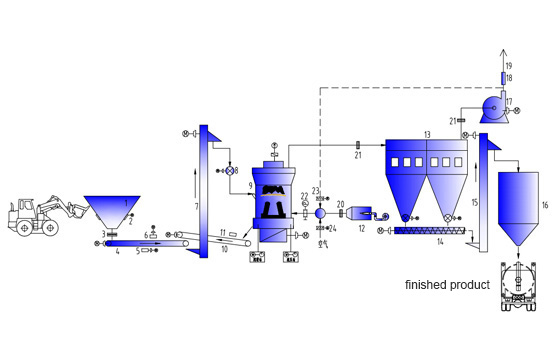Bentonite's hardness is 1-2 and density is 2-3g/cm3. It is a kind of nonmetallic ore whose main component is montmorillonite. Usually, it is white and faint yellow. Limited by the iron content, the color can also change into light grey, light green, pink, brown red, brick red and ash black. In terms of the type, content and layer charge of montmorillonite‘s exchangeable cations, bentonite can be divided into sodium bentonite(alkaline soil),calcium bentonite(alkaline soil), crude bleaching clay( acid soil/ Emathlite). Of them, calcium bentonite has two kinds--- caicium sodium bentonite and calcium magnesium bentonite.


1.Sodium Modification Stage:Most of bentonite in the nature is calcium bentonite whose performance is worse than sodium bentonite.
2.Drying Stage: After sodium modification, the bentonite has high moisture and must be dried to reduce the water content by dryer.
3.Grinding Stage:After drying, the bentonite would be crushed into the little particles meeting the feeding size of grinder and be put into the storage hopper by the elevator. Then the electromeganetic vibrating feeder evenly sends the materials to the grinder in which the grinding is carried out.
4.Grading Stage:The ground material with air flow would be graded by powder separator. After that, the unqualified powder would be sent back to the grinding cavity for another grind.
5.Powder Collecting Stage: With air flow, powder meeting the fineness standard enters into the powder collecting system along the pipe. The finished powder products are sent to finished product warehouse by conveyor and packed by powder filling tanker and automatic pack machine.